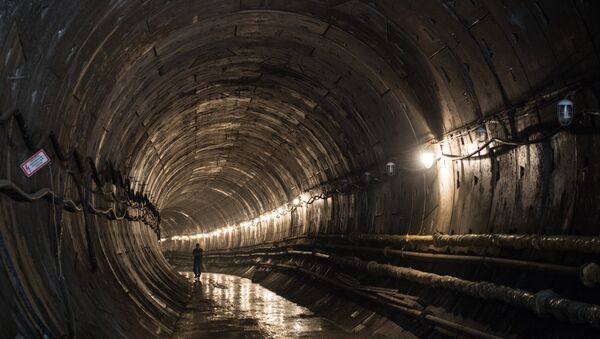This will make it possible to prevent their disintegration and also help cut metro construction and maintenance costs, as well as those for other underground structures. The project’s results are published in the IOP Conference Series: Materials Science and Engineering journal.
READ MORE: Scientists Invent Method to Turn CO2 Into Solid Carbon — Report
Defects of underground facilities' load-bearing structures can lead to accidents and costly repairs accounting for 25-100 percent of construction costs. Therefore it is necessary to develop a more durable lining for the planned underground facilities.
The quality of their construction, service life and capital expenses depend on the type of lining and specific methods used for its installation, said Professor Yelena Kulikova from NUST MISIS' Faculty of Construction of Underground Structures and Mining Enterprises.
"The discovery of a mechanism influencing the formation of defects inside the internal lining makes it possible to chart measures for preventing their formation and to reduce underground structures' maintenance and construction costs," Kulikova told RIA Novosti.Research results show that water filtration contributes to most of the defects inside underground facilities' structures.
"Speaking of deep tunnels, water filtration is usually observed in their side sec-tions. As far as shallow tunnels are concerned, water filtration is visible inside their gutters and near the ceilings. Filtration is centered near the insulation and concrete- section joints," she explained.
READ MORE: Scientists a ‘Step Closer' to Unlocking Great Mystery of Stonehenge
These combined and separate factors cause the lining to decay or even put the tunnel out of use for a long time.
Scientists believe that it is necessary to focus on the choice of structural and water-insulation materials, as well as production processes and technologies for installing water-proof joints and seams between concrete-coated sections while designing and installing load-bearing structures of underground facilities.
They used classic methods of solid mechanics, liquid-flow laws together with the accident-risk assessment theory for analyzing geo-mechanical and filtration processes. They also examined the experiment's results using statistical methods. In all, they studied ten types of sewage tunnels with a total length of 67 kilometers and over 70 tunnels lined with prefab reinforced-concrete sections.




